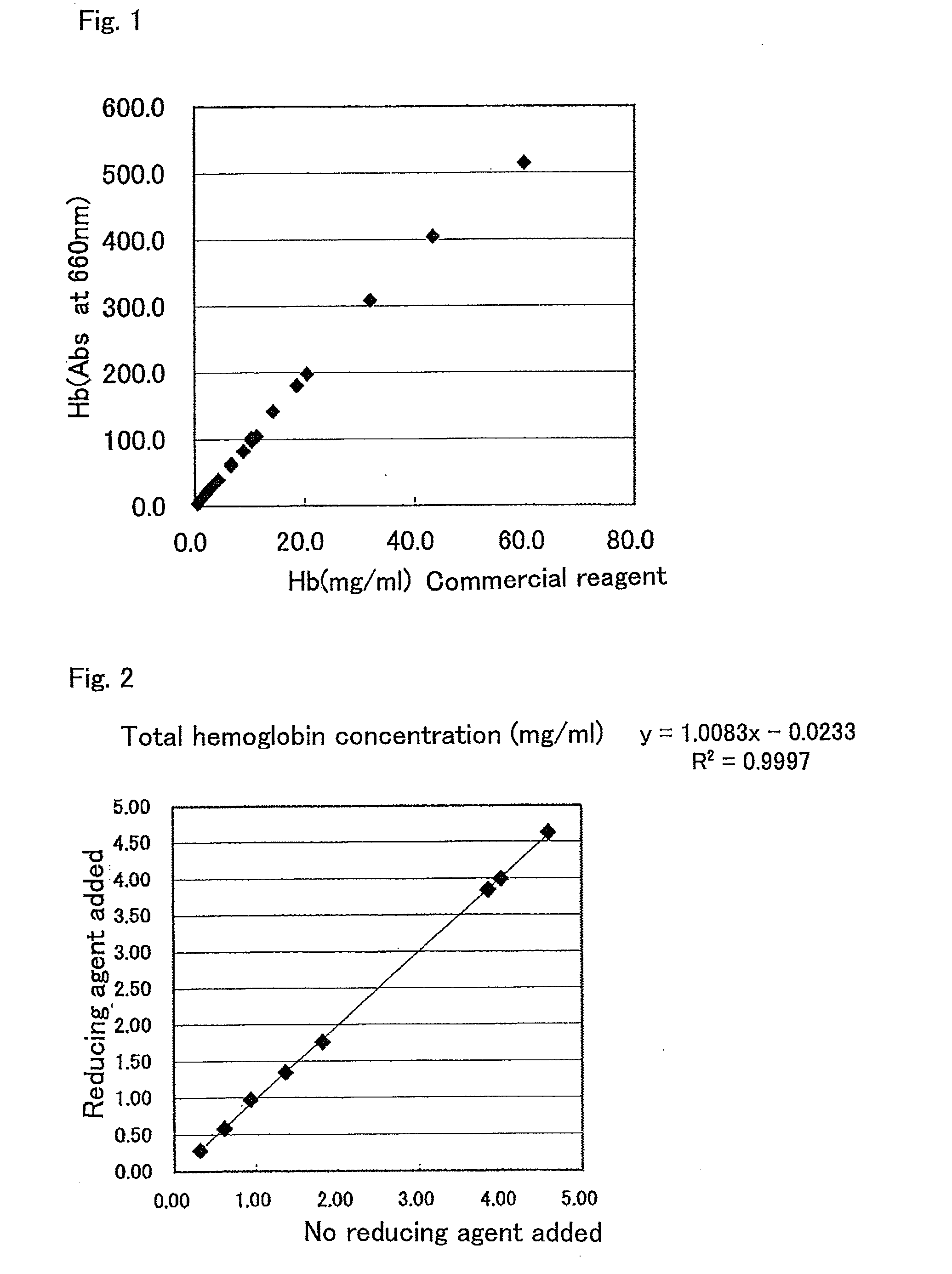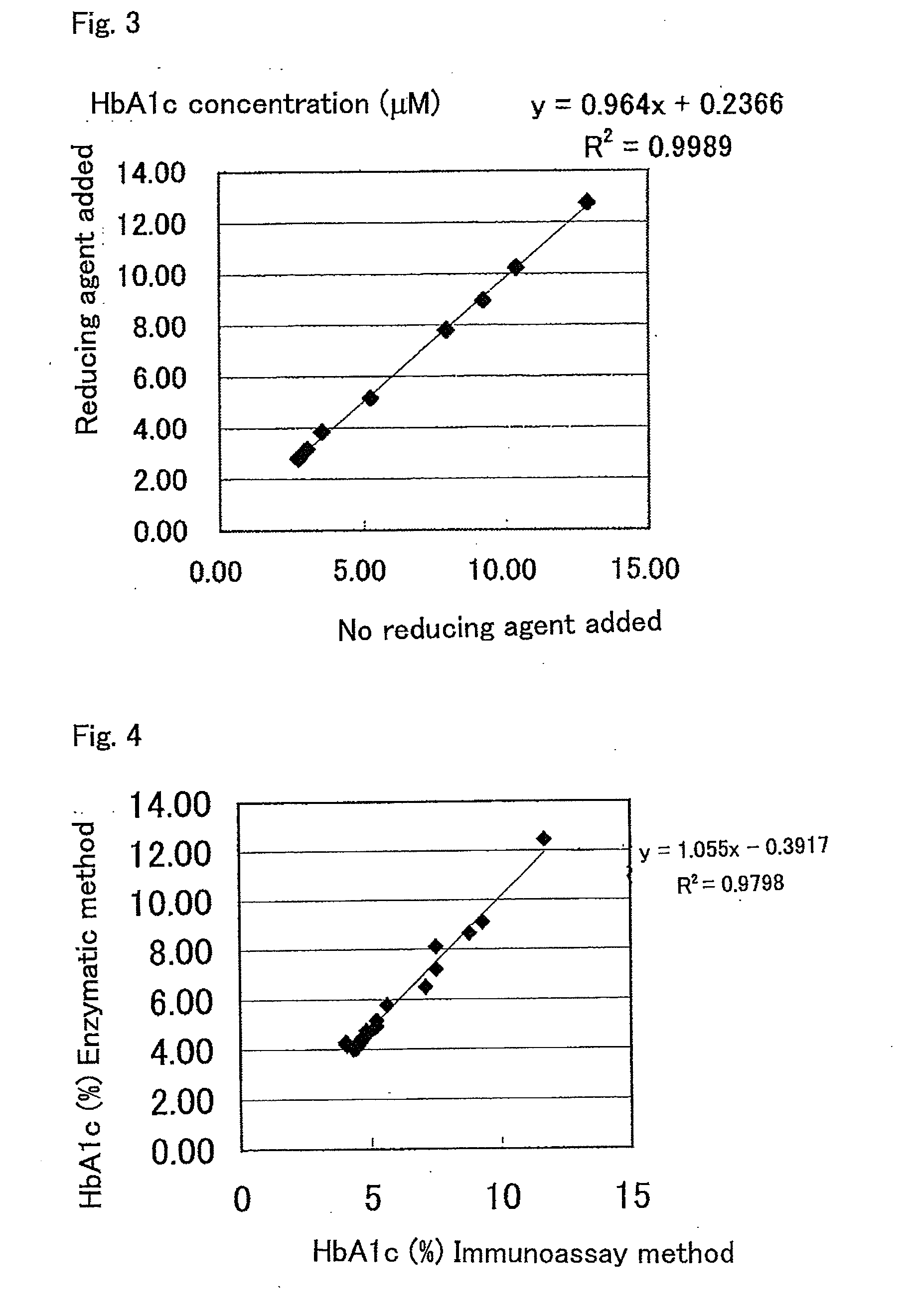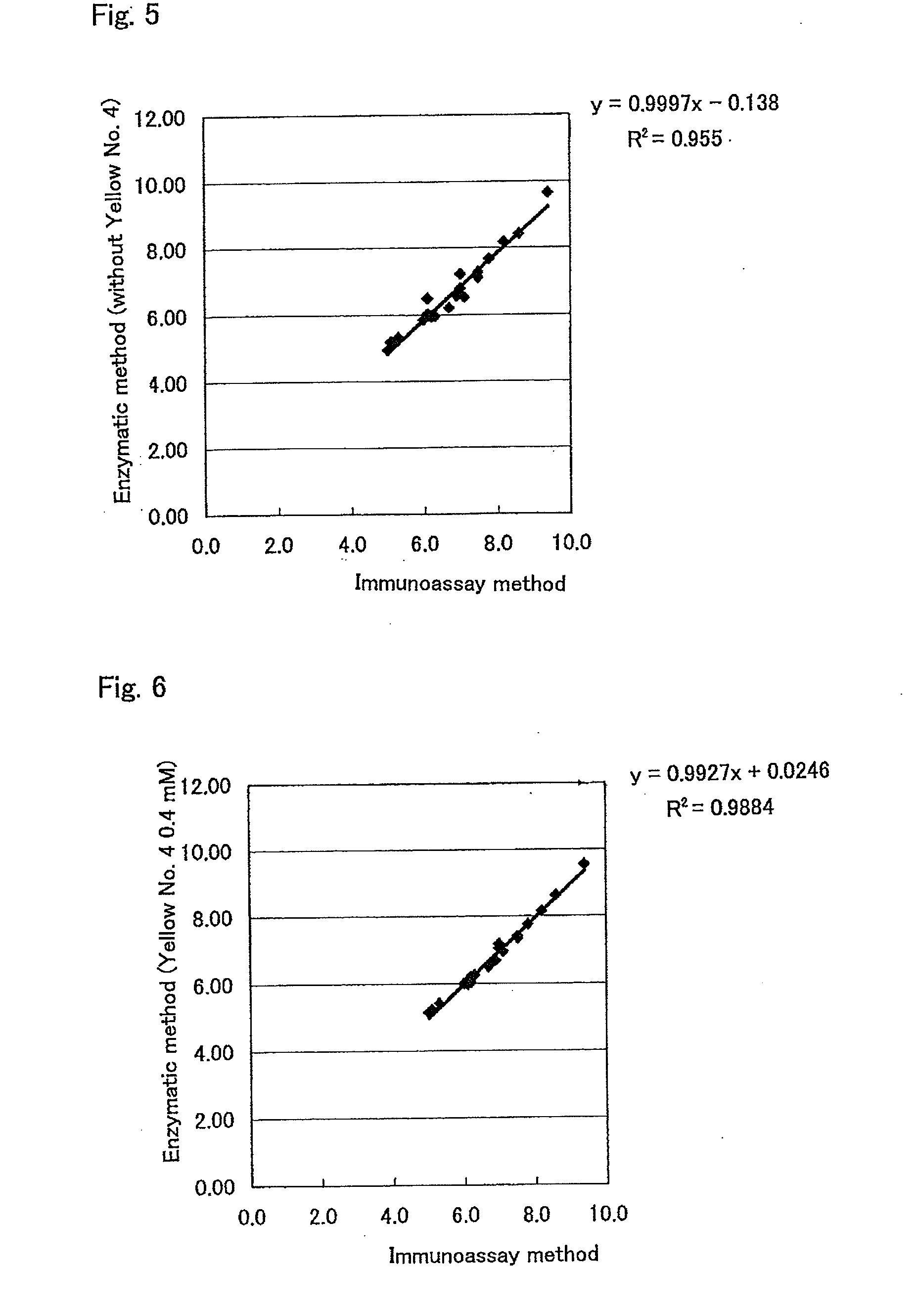Method for stabilizing leuco-type colorant
a colorant and leuco technology, applied in the field of leuco dye stabilization, can solve the problems of poor stability in a solution state, high sensitivity color development dyes, generally referred to as leuco dyes, and the development of self-coloring, so as to reduce non-specific color development
- Summary
- Abstract
- Description
- Claims
- Application Information
AI Technical Summary
Benefits of technology
Problems solved by technology
Method used
Image
Examples
example 1
Effects of Reducing Agents
[0114]To a 40 mM Tris-HCl (pH 7.1) solution (hereinafter, sometimes referred to as a “DA-67 solution”) containing 0.2 mM DA-67 as a leuco dye solution, each one of N-acetylcysteine, sodium sulfite, sodium disulfite, thioglycerol, sodium thiosulfate, 2-mercaptoethanol, and dithiothreitol was separately added as a reducing agent in such a manner that the concentration of each reducing agent becomes 1 mM and 10 mM (only concentration of dithiothreitol was 1 mM). The resultant solutions were stored without light at 37° C. for 4 days. These solutions were measured for the absorbance of 660 nm immediately after the preparation thereof and 4 days after being stored at 37° C., thereby determining a degree of pigmentation of the leuco dye solution itself before and after the storage.
[0115]In addition, a 40 mM Tris-HCl (pH 7.1) solution containing 10 u / ml peroxidase (manufactured by Sigma Co., Ltd.) was separately prepared. To the solution, a 50 μM hydrogen peroxide ...
example 2
Effects of Reducing Agents
[0117]Each one of various reducing agents was separately added to a 40 mM PIPES buffer solution (pH 7.0) containing 0.1 mM TPM-PS (manufactured by Dojindo Laboratories Co., Ltd.) as a leuco dye solution. The resultants were stored without light at 37° C. for half a year. The absorbance of 600 nm which is near the maximum wavelength of the color development of hydrogen peroxide by TPM-PS was measured, and the results shown in Table 2 were obtained. Among the reducing agents used for the examination, an outstanding effect of inhibiting nonspecific color development was observed in sodium sulfite, sodium disulfite, and sodium thiosulfate.
TABLE 237° C., after half a yearAdditiveConcentrationAbs (600 nm)Additive free1.238HP-β-CD2%0.135Sodium sulfite5 mM0.076Sodium disulfite5 mM0.069Thioglycerol5 mM1.153Sodium thiosulfate5 mM0.154Cysteamine5 mM1.53N-acetylcysteine5 mM1.46
example 3
Effects of Reducing Agents
[0118]To a 40 mMPIPES (pH 6.5) solution containing 0.2 mM DA-67 (hereinafter, sometimes referred to as a “DA-67 solution”) and 2% hydroxypropyl-β-cyclodextrin as a leuco dye solution, was separately added, as a reducing agent, each one of N-acetylcysteine, sodium sulfite, sodium disulfite, and thioglycerol in such a manner that the concentration of each reducing agent becomes 1 mM, 2 mM, 5 mM, and 10 mM. The resultant solutions were stored without light at 37° C. for 7 days. These solutions were measured for the absorbance of 660 nm immediately after the preparation thereof and 7 days after being stored at 37° C., thereby determining a degree of pigmentation of the leuco dye solution itself before and after the storage. Next, a reagent blank and color intensity were analyzed using Hitachi 7170 S-type automatic analyzer. More specifically, to 0.18 ml of 40 mM Tris-HCl (pH 7.5) solution containing 10 u / ml peroxidase (Manufactured by Sigma Co., Ltd.) and 5 u / m...
PUM
| Property | Measurement | Unit |
|---|---|---|
| absorption wavelength | aaaaa | aaaaa |
| absorption wavelength | aaaaa | aaaaa |
| absorption wavelength | aaaaa | aaaaa |
Abstract
Description
Claims
Application Information
 Login to View More
Login to View More - R&D
- Intellectual Property
- Life Sciences
- Materials
- Tech Scout
- Unparalleled Data Quality
- Higher Quality Content
- 60% Fewer Hallucinations
Browse by: Latest US Patents, China's latest patents, Technical Efficacy Thesaurus, Application Domain, Technology Topic, Popular Technical Reports.
© 2025 PatSnap. All rights reserved.Legal|Privacy policy|Modern Slavery Act Transparency Statement|Sitemap|About US| Contact US: help@patsnap.com



